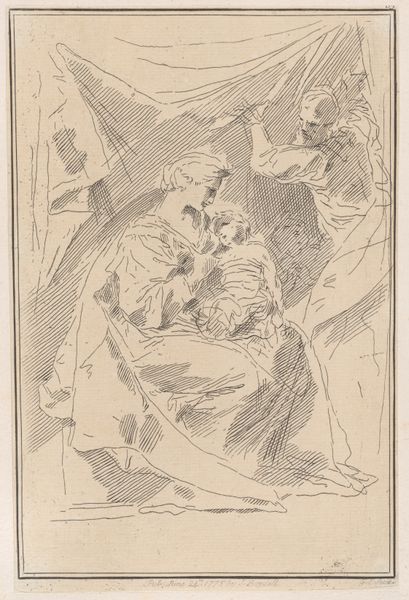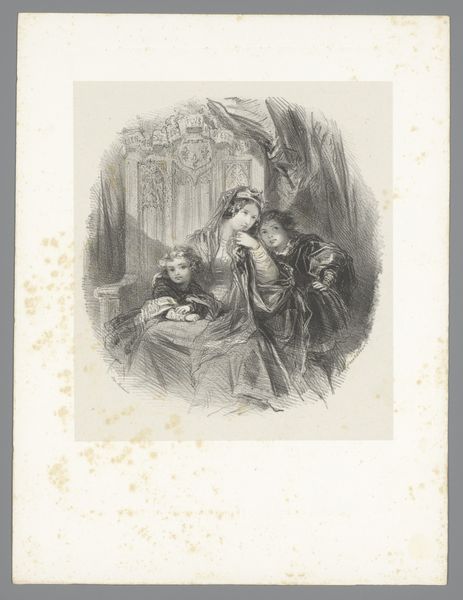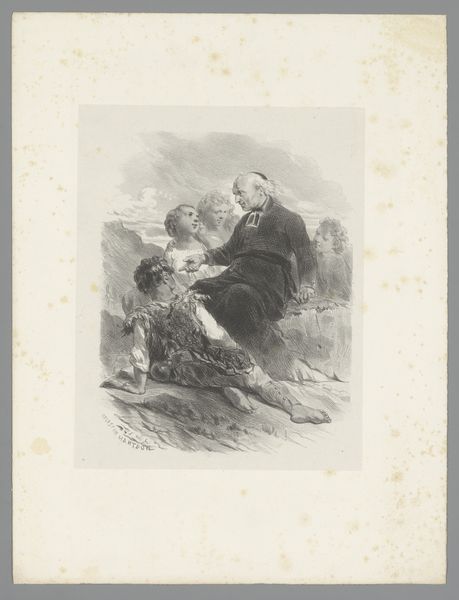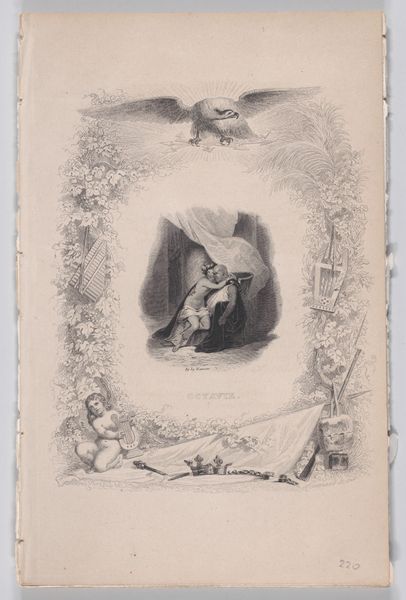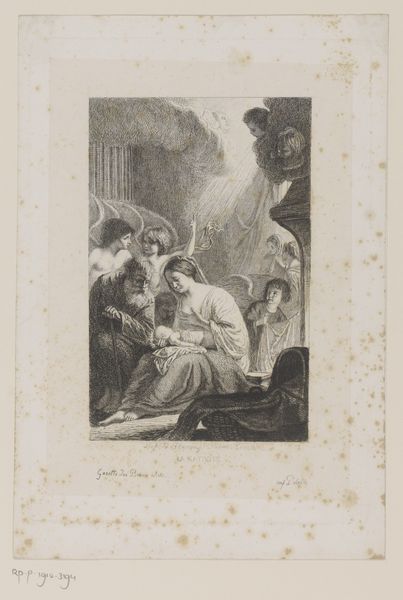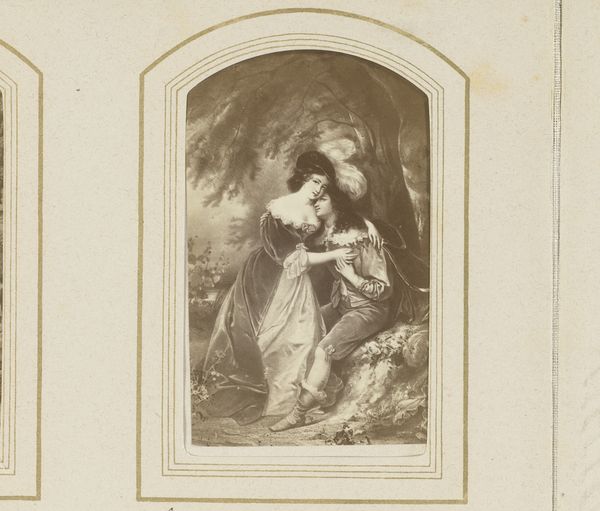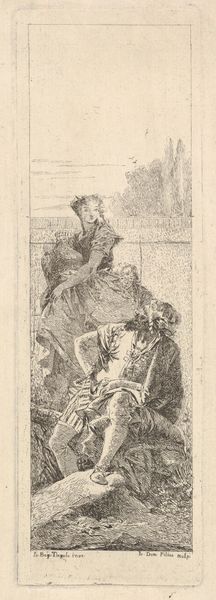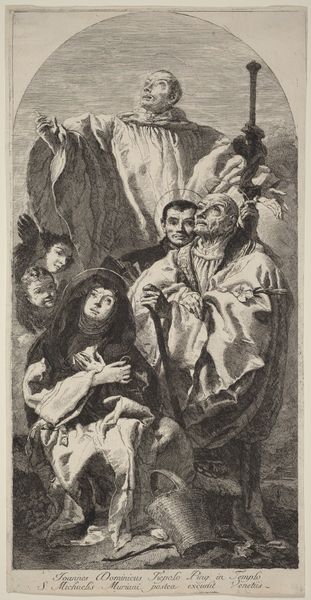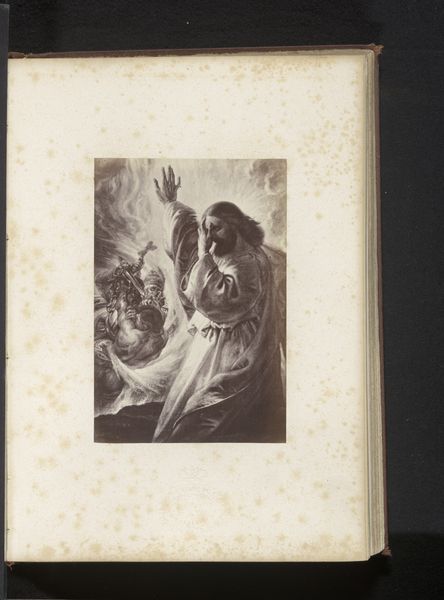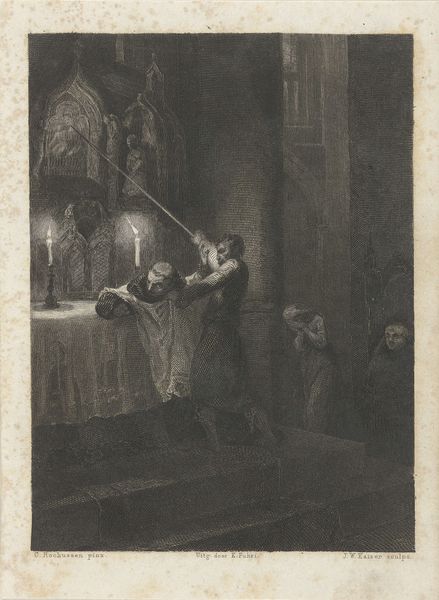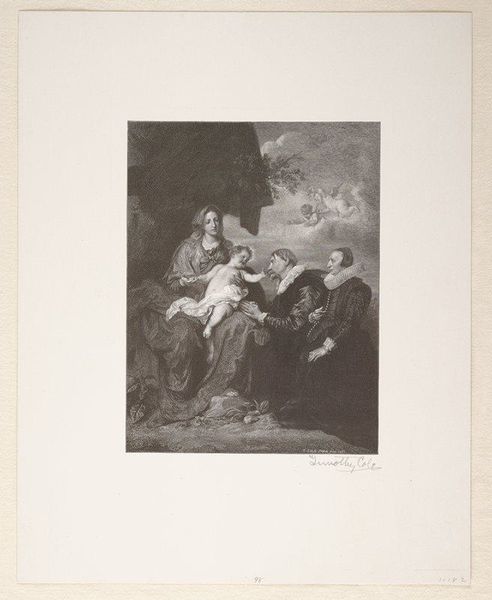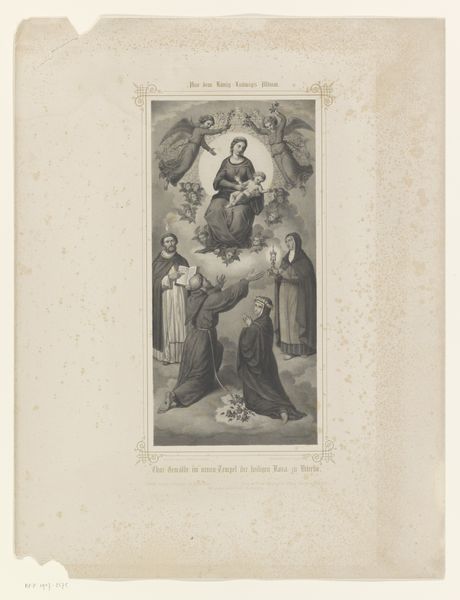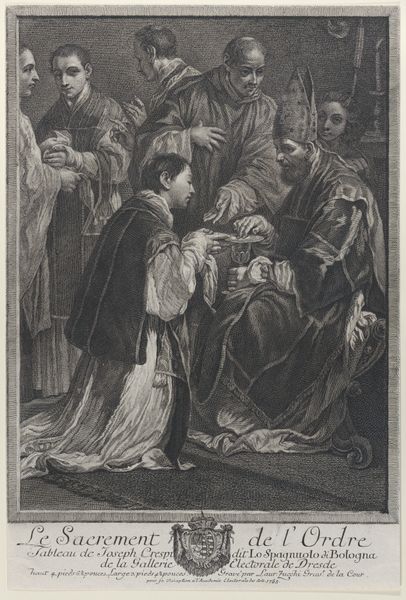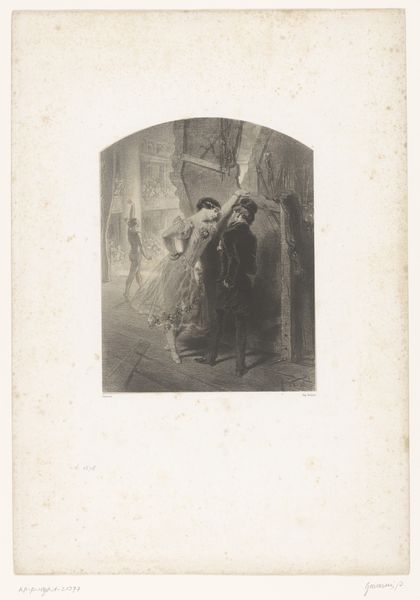
Fotoreproductie van een schilderij van de heilige Antonius van Padua met het Kind van Bartolomé Murillo 1880 - 1905
0:00
0:00
Dimensions: height 226 mm, width 140 mm
Copyright: Rijks Museum: Open Domain
Curator: I find this photograph deeply moving. We’re looking at "Fotoreproductie van een schilderij van de heilige Antonius van Padua met het Kind van Bartolomé Murillo," a gelatin-silver print likely produced between 1880 and 1905, credited to Emilio Beauchy. Editor: Whoa, instantly, there's something dreamlike, ethereal, almost melancholic in the sepia tones and the soft focus. It's like a memory flickering. Curator: Exactly. Consider how photography at this time was both documenting and shaping perceptions of art history. The Baroque painting it captures presents St. Anthony, often seen as a figure who bridges divinity and the everyday, particularly for the poor and marginalized. Editor: Ah, the bridge-builder vibe, I dig it. Is that why the light is concentrated right at the heart of the saint's interaction with the divine baby, leaving everything around him in shadow? It feels almost theatrical, don't you think? Curator: Absolutely. Think about the period. The image presents Baroque art – often aligned with Catholic resurgence – which intersected with contemporary social anxieties around faith, class, and progress. This print becomes not just a copy but an active participant in debates about cultural identity and the role of the church. Editor: So true! The photograph becomes a commentary on the power of faith. It's heavy but in a bittersweet way. What do you suppose people felt when they first laid eyes on something like this back in the day? What would they think, comparing it to our world now, centuries removed from those painted ideals and prayers. I wonder what still holds. Curator: I think they recognized both the reverence and the artistic style, situating themselves within a continuum of faith. Now we can study and consider this print with a heightened critical perspective, taking it as both religious symbol and social statement. Editor: Okay, totally different thought... Does anyone else find it so funny that the cherubs are almost a cliché now? They were avant-garde then. Amazing! That juxtaposition kind of makes me laugh out loud, now that I'm really thinking about it! This image and art... it's complicated, right? It still gets us thinking today! Curator: Precisely. It remains an intricate artifact and speaks volumes on societal context. Editor: I concur. Just amazing.
Comments
No comments
Be the first to comment and join the conversation on the ultimate creative platform.
